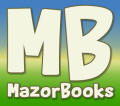
|
| • Holiday Gifts |
| Holiday Central > Sukkot > The Sukkah |
Sukkot: All About the Sukkah
By: Rivka C. Berman, Contributor
Click Here for More Holiday Articles

|
CHILDREN'S BOOK for AGES 5-11 |
Like every Jewish holiday, Sukkot too has its defining symbols. In heavily populated Jewish areas in the Diaspora, such as Boro Park in Brookyn New York, and of course, all over Israel, one cannot miss the arrival of Sukkot. As we shed the heaviness of the holiest of days, Yom Kippur, the sound of hammers driving nails into wood is prevalent. The "Sukkah" a little "booth" a bonus room of sorts, is added to homes on the front lawn, on the roof or a balcony.
- Sukkah Dimensions
- The Sukkah Walls
- The Sukkah Roof
- Decorating the Sukkah
- Sukkah Disposal
- Holy Hospitality
- What do we Do in the Sukkah?
- What do we Eat in the Sukkah
- It's Raining, It's Pouring
- Sleeping in the Sukkah
What is a Sukkah?
A sukkah is a booth of sorts, a construction of
a one-room abode where holiday-observing Jews dine, entertain, and some
even spend the nights, for seven days each year. The origin of
this ritual is biblical. God instructed the Jewish people to
construct booths.
“You shall live in booths seven days. All
citizens of Israel shall dwell in booths” (Levitcus 23:42).
Jews who celebrate Sukkot forsake the comforts of a sturdy home equipped with wall-to-wall carpeting and central heating for a temporary dwelling and receive in return a reality check.
What is really important? The creature comforts of home? Or the warmth of community and family that remains even in the flimsy surroundings of the sukkah? It is easier to feel God’s presence in the sukkah because it strips away the materialistic cholesterol of all the stuff inside the house. All the trappings of the home create an illusion that protection comes from having the right security system, deadbolt locks, and window bars. In the sukkah, we can feel God’s protection, God’s watchfulness, like the Jews who left Egypt to follow God into the desert.
According the Guide to Jewish Religious Practice by Isaac Klein, the sukkah reminds the Jew “not to trust in the size or strength or beauty of his home, though it be filled with all precious things; nor must he rely upon the help of any human being, however powerful. But let him put his trust in the great God whose word called the universe into being for He alone is mighty, and His promises alone are sure.”
Some Jews begin building the sukkah right after their post-Yom Kippur bagel to demonstrate their eagerness to fulfill their prayerful pledges to be better Jews.
There are a few basic rules and regulations to keep in mind in order to transform an average lean-to into a sukkah. The following details are taken from Jewish legal writings and are at best summaries of the actual laws. A local rabbi should be able to clarify questions about your personal sukkah.
Sukkah
Dimensions
At minimum,
a sukkah can be 27x27 inches. Jewish
legal thinkers came up with these dimensions as the smallest space one
would occupy while sitting or crouching at a table.
A building becomes a building in Jewish law when it is at least
nine tefachim or about 38 inches high.
Under that height a structure is relegated to an odd halachic
category, known as a karmeleet,
which it is considered neither public or private domain.
The tallest a sukkah may be is 30 feet tall.
A sukkah taller than that would not have its schach visible to a
passerby. This would give the
sukkah the appearance of a permanent building and would not have the
important temporary form intrinsic to a proper sukkah.
Bear in mind that the 30 foot limit is from the base of the sukkah
itself and not measured from the ground up.
Sukkot may be built atop sky scrapers as long as the sukkah’s
walls and roof are less than 30 feet tall.
The
Sukkah Walls
How many walls?
At minimum a sukkah
should be have two walls plus an additional third wall that is at least as
wide as a hand span. None of
the sukkah walls have to be temporary.
A sukkah becomes a sukkah because of its schach, roof covering.
The schach alone must be put up for the purpose of being used for
the sukkah. To take this
halachic stance to an extreme: a pre-existing room without a roof could be
used as a sukkah as long as the schach material was placed on the top
specifically for sukkot.
Wall material
These walls may be made of any
material from plywood to canvas sheets.
Organic material like bamboo, twigs, and cornhusks are used by some
who wish to drive home the agricultural basis of the day.
In accord with the letter of the law, pieces of the wall may be
spaced up to a foot apart and still be considered one solid way. In practice, sukkah builders strive to build more solid
walls.
Sturdiness
When is a wall a wall?
Jewish law is of the opinion that a wall will not sway more than
one tefach (4 inches) in either direction when a normal wind blows. For
this reason, walls hung in curtain fashion can be too flimsy to count as a
proper sukkah wall.
S'chach
- The Sukkah Roof
The s’chach is the ingredient that transforms a properly built structure
into a sukkah. A sukkah’s
walls and decorations may be pre-existing and permanent but the s’chach,
roofing material, must be put up for no reason other than to be used as a
sukkah.
It is important that the schach is the roof of the sukkah and not any other sort of overhang. Even though natural material is to be used exclusively for schach, any growing thing still attached to the ground – such as a tree – that dangles over the sukkah roof disqualifies that part of the sukkah from use for this mitzvah.
Suitable S’chach Material
Only
organic matter may be used to top the sukkah.
This leaves a wide variety of materials suitable for schach with a
few reservations. Any natural
material that has been fashioned into a utensil or furniture cannot be
used. For example, pieces of
chairs, wooden spoons, and even pure cotton sheets do not fit the schach
bill. However, wood pieces
that have been milled into lumber may be used if they are less than four
tefachim, about 16 inches, wide.
Schach material should be set atop the sukkah after the walls are put up. It is best for the schach to rest atop material that would be kosher as schach. For example, a sukkah constructed out of modular aluminum pieces should have wooden boards placed atop the aluminum for the schach to rest upon.
How Much Schach?
The schach covering should
block most of the sun’s rays inside the sukkah.
Some commentators are of the opinion that this legal detail arises
from the sukkah’s origin as the hut that the Children of Israel built to
shade themselves in the desert where an overly sunny sukkah would be
worthless.
There is another tradition, which is not accorded the status of a Jewish law, to limit the amount of schach to the amount through which the nighttime stars are visible.
Decorating
the Sukkah
Hanging Fruit
- Since the sukkah is supposed to be used as a home, it is traditional to
decorate the sukkah. Hanging
fruit from the schach rafters is a way to beautify the sukkah while
commemorating the holiday’s harvest roots. Because bees also enjoy the fruit, hanging up plastic,
ceramic or otherwise fake fruit may be a better option.
Furthermore, faux fruit can be used year after year and will not
lead to wasting food.
Stringing New Years Cards
Decorating a sukkah with New Years cards is so common
that it almost seems like a mitzvah.
What’s the attraction? The
graphics of New Years cards are Jewish and often lovely, perfect for those
who want their sukkah to look notably Jewish and lovely.
If that were not enough, then having the good wishes of friends and
loved ones all around is never bad and certainly wonderful at the dawn of
a new year. (The cards also
provide fodder for table talk, “Oh, you got a card from Jerry Levine.
How’s his new business/new baby/old Chevrolet doing?”
Be careful not to let the decoration discussion slide into snide
comments.)
Some Stringing Tips: - Hole punch the two top corners of the card. String it along a piece of twine. Continue on with the next card. This is the intuitive way to string the cards. Improve upon this method, which often results in the majority of the cards slipping down into one big lump, by stapling each card along the twine once it is slid into place. Better still, amble over to the nearest educational store and laminate the cards in a strip. Once encased in a thin layer of plastic, the cards will outlast many seasons of Sukkot storms.
God Bless the
Coat Hanger
Keep the kids busy during sukkah construction.
Hand them art material, string, and wire hangers, and let the
mobile making begin. Just
about any little doodad: a bird made of feathers and Styrofoam, a happy
face fashioned from beads stuck on a paper plate, a collection of fall
leaves and twigs, can be displayed by attaching it to a piece of string
and looping the string around a hanger bottom.
Hanger heads may then be hooked around the sukkah rafters and
niches in the sukkah walls.
Sukkah
Disposal
Judaism puts emphasis on investing physical matter with
spiritual meaning. Wool and
cotton are spun into a tallit, prayer shawl.
Leather is stretched into Torah parchment. On Sukkot, palm branches and citrons and the common materials
used for a sukkah’s walls and roof are graced with a holiness that does
not fade once the holiday has passed.
Mitzvah objects such as these deserve a respectful end.
Recycling these items for use in another mitzvah has been
considered a proper use for these items long before the first Earth Day
was celebrated. One common
use for an old lulav is to store it as kindling for burning the leaven on
Passover eve. The already
fragrant etrog can be studded with cloves and used in the post-Sabbath
Havdallah ceremony, when smelling a spice is part of the ritual.
It may be less feasible to convert used sukkah walls for use in a
new mitzvah. Traditional
Jewish sources recommend burning the sukkah, a less disgraceful end than
simply tossing out the sukkah with last night’s leftovers.
Holy
Hospitality
God’s presence radiates so strongly from the
humble sukkahs that the holy souls of Abraham, Isaac, Jacob, Moses, Aaron,
Joseph, and King David cannot help but be attracted to them.
Each day, all seven shepherds of Israel flock to the backyard or
balcony huts, acting as silent guests with one lead shepherd influencing
the spiritual impact of the day. Together they are known as the Ushpizin,
which is Aramaic for “guests.”
Since spiritual beings do not eat, there is a custom to offer the poor the meals that would have been served to the Ushpizin. Maimonides emphasizes the importance of feeding the poor. “Anyone who closes the doors of his home, feeding only his family but not the poor and despondent, has not attained the joy of performing a mitzvah but is only stuffing his stomach” (Mishna Torah, Hilchot Yom Tov 6:18).
Each of the Ushpizin was known for a spiritual strength that parallels the seven attributes outlined in kabalistic writings.
Abraham for his
love and kindness
Isaac for his restraint
Jacob for his balance of kindness with restraint which resulted in beauty
Moses for his leadership through Torah
Aaron for his empathy
Joseph for making holiness his spiritual foundation
David for developing his kingdom in a way that invited God’s presence,
It doesn’t take much to notice that all seven of the Ushpizin are men. Altering the tradition to include women is easy, because each of these men had holy wives.
Abraham and Sara
Isaac and Rebecca
Jacob and Rachel, Leah, Bilha, and Zilpa
Moses and Tzipporah
Aaron and Elisheva
Joseph and Osnat
David and Michal, Abigail, Bathshebal, et al.
There are plenty of other strong Jewish women to assign Ushpizin status to. Abigail, wife of David; Deborah the Judge; Yael the warrior who slew an enemy general; Yehudit the valiant woman who did the same several centuries later; Rachel who sacrificed her personal wealth to marry a poor man who was still illiterate but would become the illustrious Rabbi Akiva; Queen Esther, heroine of Purim. Modern women made their own mark Golda Meir; Sara Schneirer creator of the first girls’ yeshiva; your great grandmother who encouraged the family to emigrate from Europe just before the war began.
What
do we Do in the Sukkah?
According to the Torah,
there is an obligation to “dwell” in the sukkah.
Dwelling includes eating, talking, singing, snoozing, reading,
relaxing, entertaining, and more. The
sukkah is one of the few Jewish practices that involves the entire body in
the mitzvah experience. Other Jewish observances that involved the entire
body are immersing in the mikva, a ritual pool, and wrapping oneself in a
tallit, prayer shawl. Among these mitzvot, dwelling in the sukkah wins for
connecting the entire body with a mitzvah for the greatest duration.
Stepping into a sukkah provides a physical framework for
understanding the all-encompassing nature of God’s presence.
What
do we eat in the Sukkah?
While there is nothing like opting to
sit in the sukkah while sipping a cup of hot coffee in early morning cool,
coffee is not a food that Jewish law would require one to eat in the
sukkah, at least according to most Jewish legal opinions.
Baked grains - cookies, cake, cereal, pasta, toast – are sukkah
worthy.
It's
Raining, It's Pouring
There is a specific mitzvah to eat in the sukkah, especially the first night. Even
if the rest of the meal will be eaten inside because of wet weather, it is
worthwhile to recite the kiddush blessing over the wine and the hamotzi
blessing over the challah in the sukkah.
Rabbi Moses Isserles’s (1530-1572) guideline for when to move a sukkot meal inside: Remain in the sukkah if the amount the sukkah is leaking during the rain would not cause a person to leave his or her home. (Aish.com)
Jewish legal writers rely on the axiom that the Torah is a “way of peace” to support their opinion that if eating in the sukkah causes one to be preoccupied with discomfort one should not eat in the sukkah. Yet there are tales told of rabbis and their families who were so desirous of drinking in the holiness of the sukkah that neither rain nor snow forced them into their warmer homes.
Before eating in
the sukkah, recite a blessing:
Baruch
atah adonai eloheinu melech ha'olam asher k'dshanu b'mitzvotav v'tzivanu
leisheiv ba-sukah
Blessed are You,
Adonai our God, Ruler of the universe, who makes us holy with mitzvot and
commands us to dwell in the sukkah.
Sleeping
in the Sukkah
Most traditional interpreters of Jewish law
include sleeping in the sukkah as a part of the mitzvah to dwell in the
sukkah. In the Shulchan Aruch
Harav, a major work on Jewish law, author Rabbi Shneur Zalman of Liadi
writes against this practice. Rabbi
Moses Isserles, who wrote an earlier authoritative work on the Code of
Jewish law, argued against over-piety stating that it is foolish to sleep
in the sukkah when it rains, or if one is bothered by cold, foul odor or
insects.

Mazor Guide for Sukkot brings you much more about the holiday, its meaning and its traditions... See the links below.
|
|
|
|

|
| • Holiday Gifts |
|
|
 |
| • Celebrations Gifts |
|
·
Wedding Gifts · Bar Mitzvah Gifts · Baby Gifts · Jewish Books at Great Prices |
KOSHER BY DESIGN Amazing New Kosher Cookbook. BUY |
Mazor Guides: Wealth of Information and Resources
- Mazor Guide - The Ultimate Guide to
Living Jewish -
- Guide to Jewish
Holidays -
-
Bar Mitzvah
and Bat Mitzvah Guide -
-
Guide to a
Jewish Wedding -
-
Guide to Jewish Celebrations -
-
Guide to Kosher Living -
- Infertility and
Judaism: A Guide -
- The Get (Gett)
- the Jewish Divorce: A Guide -
- Zei
Gezunt: Jewish Perspective on Health -
- Jewish Genetic Diseases -
-
Death and Mourning in
Judaism -
Copyright 1998-2024 MazorNet, Inc.
| http://www.MazorGuide.com | http://www.MazorBooks.com | http://www.Kosher-Directory.com | http://www.JewishCelebrations.com






